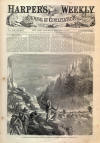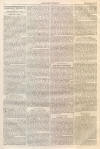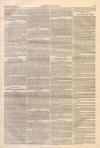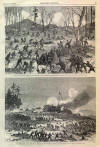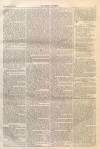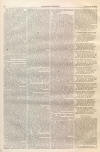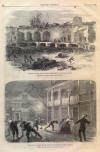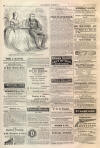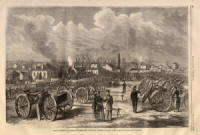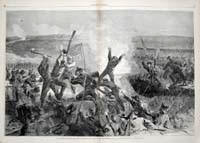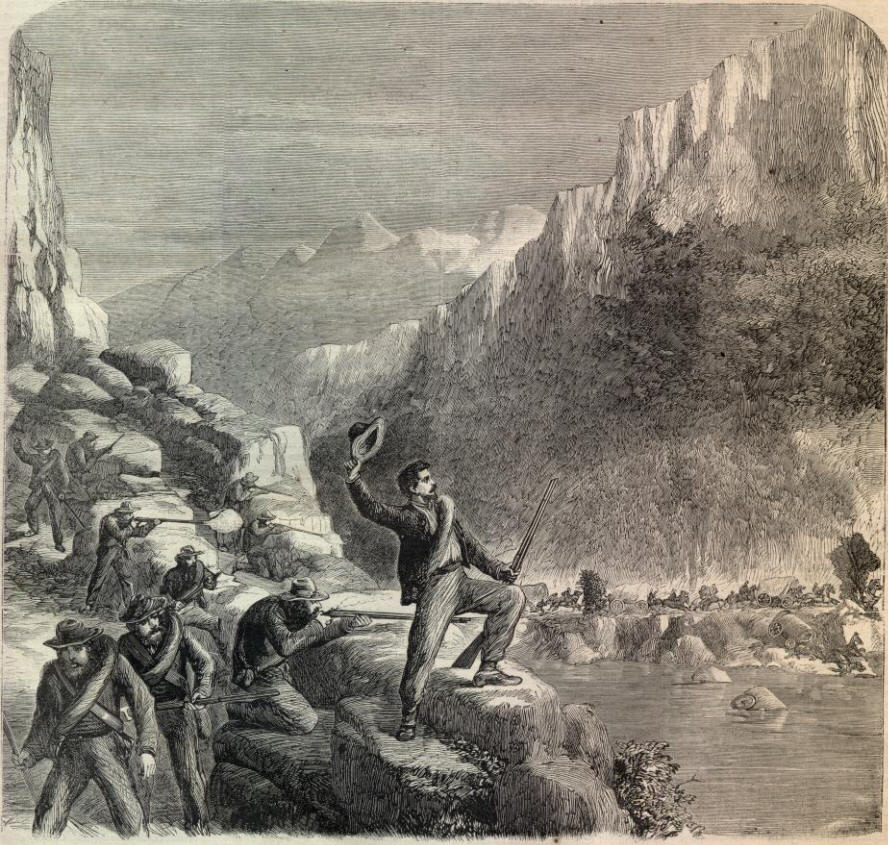|
This Site:
Civil War
Civil War Overview
Civil War 1861
Civil War 1862
Civil War 1863
Civil War 1864
Civil War 1865
Civil War Battles
Confederate Generals
Union Generals
Confederate History
Robert E. Lee
Civil War Medicine
Lincoln Assassination
Slavery
Site Search
Civil War Links
Civil War Art
Mexican War
Republic of Texas
Indians
Winslow Homer
Thomas Nast
Mathew Brady
Western Art
Civil War Gifts
Robert E. Lee Portrait
|
NEW YORK, SATURDAY, JANUARY 9, 1864.
$1,00 FOR FOUR MONTHS.
$3,00 PER YEAR IN ADVANCE.
Entered according to Act
of Congress, in the Year 1863, by Harper & Brothers, in the Clerk's
Office
of the District Court for the Southern District
of New York.
THE REBELS
FIRING ON OUR
SUPPLY—TRAIN.
ON this page
we give a graphic sketch of an attack made by rebel sharp-shooters upon our
supply-train on the banks of the Tennessee. After the
battle of Chickamauga,
when our army had retired to its strong-hold at Chattanooga, it was the chief
object of the rebels to disturb our communications, and if possible to break up
its supply-trains. Of the particular instance given in the sketch the artist
was an eve-witness. Upon the crags of Raccoon
Mountain, and overlooking the river, were posted a small force of picked men of
Longstreet's
corps, armed with Whitworth rifles. The position was twelve
miles in the rear of our works at
Chattanooga,
and was unguarded. Captain Goree had charge of the attacking party. The only way
of
reaching the position chosen for attack, and avoiding our scouts, was by taking
the Indian trails through the forest heights. No sooner had the position
been gained than the rumbling of the approaching train was heard along
the river-bank. Thus when the train came up the gorge, preceded by a small
infantry escort, and had fairly filled the open space of the road in front of
the rebel sharp-shooters, it was entirely at the mercy of the latter. Then
the word wok given to fire, and a score of deafening
reports leaped from crag to crag; and close upon the fire followed the
confusion of a stampede. The teams in front were crippled by dead mules; and
those behind, thus blocked in and unable to move forward, were equally cut off
from retreat by the inextricably confused wagon in the rear. The escort, after
firing a few shots, fled panic-stricken, leaving the train in the hands of the
enemy.
ON
page 28 we give an illustration representing
the effect produced by one of
Gilmore's shells bursting
in the streets of Charleston. When Gilmore first began to shell the city it had
more noncombatants
in it than it has now; it was not believed that the city was within range until
the actual reality
brought conviction. The illustration is designed to represent the first
occasion upon which the city was shelled, and depicts the overwhelming surprise
of the citizens. The shelling commenced at midnight, but did little harm beyond
terrifying the ladies left in the city. Only a single house was set on fire. In
the particular scene presented by the artist a fireman is running through the
streets giving the alarm, and a watchman, thoroughly overcome, is taking leave
of his senses and his staff in
the foreground. The gun burst after a few discharges.
The distance was over four miles. At latest
dates General Gilmore had recommenced shelling the
city, having destroyed twelve buildings, killed one man, and seriously
wounded some eight or ten persons. We give also on the same page an illustration
representing the interior of Fort Sumter after a continuous bombardment by the
batteries on Morris Island. The bombardment was from 200-pound Parrott guns, and
eve' v gun of the fort was dismounted, leaving the garrison to be passive
spectators of the gradual demolition of the walls. Nearly the whole parapet of
the fort was swept away. The gorge-face
presents one mass of ruins, and the casemates scarcely afford shelter to the
garrison.
Beauregard, it is said, is determined to hold the fort till the last;
by the bayonet, if need be.
LONGSTREET'S SHARP-SHOOTERS FIRING ON A FEDERAL SUPPLY TRAIN -[SKETCHED BY AN
ENGLISH ARTIST]
We acquired this leaf for the purpose of digitally
preserving it for your research and enjoyment. If you would like
to acquire the original 140+ year old Harper's Weekly leaf we used to
create this page, it is available for a price of $185. Your
purchase allows us to continue to archive more original material. For
more information, contact
paul@sonofthesouth.net
|
